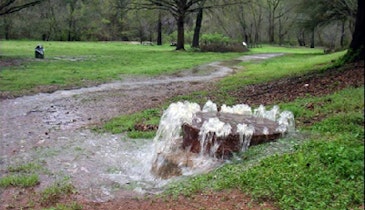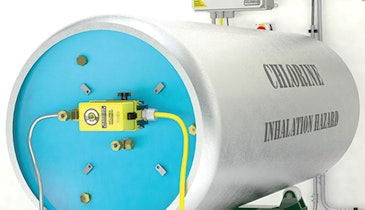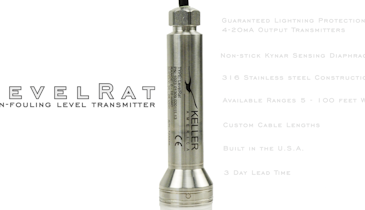
Interested in Filtration?
Get Filtration articles, news and videos right in your inbox! Sign up now.
Filtration + Get AlertsRhinelander, Wisconsin, has a nose for cost-effective odor control.
To eliminate odors from foul air drawn from beneath its influent channel covers, the city’s wastewater treatment plant has installed a simple filter consisting of a bed of woodchips. Native-born biology formed on the woodchips consumes the sulfuric and malodorous components in the air.
“Total cost of the system was about $18,000,” explains Director of Public Works Tim Kingman. He says the filter has been operating effectively for about five years, and the plant has had to replace the woodchips infrequently, “basically for housekeeping reasons,” Kingman says.
The Rhinelander wastewater treatment plant is relatively new, located 2.5 miles south of the city along the Wisconsin River. It was commissioned in 2011 and replaced a much older in-city facility that would have required considerable upgrading to meet future growth demands of the city including new nutrient removal requirements.
The plant experiences an average flow of 2.15 mgd, and uses an activated sludge process to achieve biological phosphorus removal, followed by clarification and UV disinfection. Primary solids are blended with WAS and digested and dewatered to a Class A material, which is then marketed as a soil amendment around the area by a private contractor. Methane produced by the digesters is used to heat the digester’s biosolids.
Kingman explains that the influent wastewater can become quite malodorous over its 2.5-mile journey to the plant. The influent channels are covered; a 10 hp centrifugal pump pulls limited fractions of warm air from the headworks-occupied area to reduce heating costs. Then the air from beneath the covers is exhausted to the woodchip filter, where it passes up through the bed and vents to the atmosphere.
The filter bed is 8 to 10 feet deep, extending underground and resting on a concrete grid. “The filter was assembled with concrete blocks we purchased locally,” says Kingman. “At the base there is a PVC header that distributes the air uniformly across the filter bed. We built the filter bed and a contractor assembled the rest, including blower piping and controls.”
Kingman says that although the blower is equipped with timer controls, the staff operates the filter to run continuously. "It has performed favorably,” he says. “Periodically we remove and replace about 100 cubic yards of chips just to freshen the performance.”
He says the chips don’t have to be clean; in fact dirty chips are preferable.
Kingman says the plant and its designers considered other odor control methods such as activated carbon, some more proprietary processes, chemicals and scrubbers, but rejected them because of cost and operational issues. “While more complicated systems are sometimes necessary, we tried this method first. Our system is exceedingly simple. Plus, woodchips around the Northwoods sure are plentiful.”





